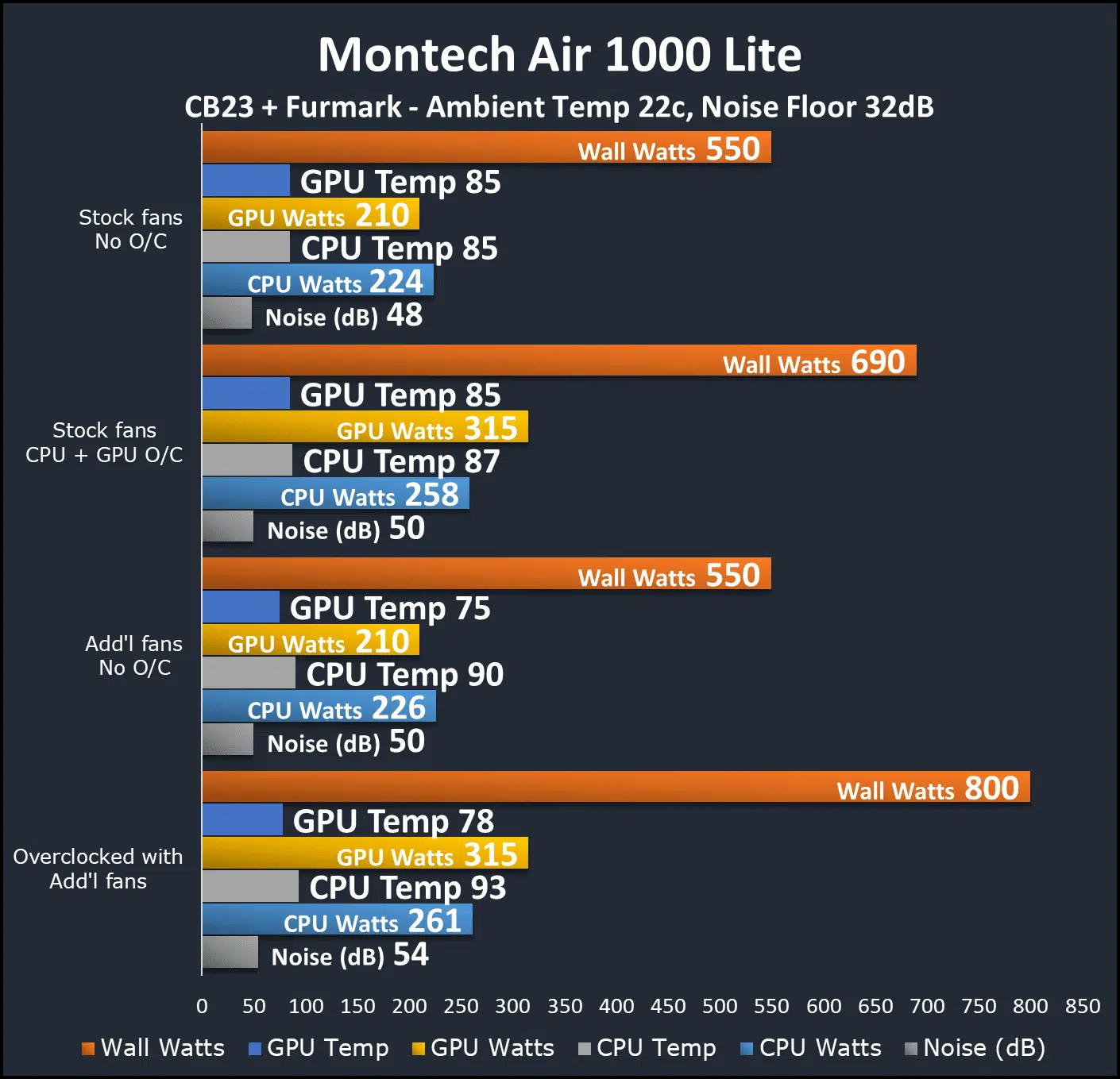Montech Air 1000 Lite Testing
A Note on Testing
For our 2022 case testing, we’ve updated our testing thesis and test methods. By selecting a set of air-cooled components that present a very high thermal challenge for cases under review, we have moved away from using thermal probes as a point of comparison.
Instead, our goal is to show whether or not a case enhances or inhibits performance, as well as the thermal and acoustic results recorded during testing.
Our primary focus is on the performance of the installed 2022 Review Rig, and our presented test results are taken under the following circumstances:
- All stock – CPU defaults on the MSI Z490, three Montech case fans
- Overclocked – CPU set to 5.0GHz, GPU power raised to 150% (315w), three Montech case fans
- Three additional fans (1x Noctua, 2x EKWB), CPU and GPU at defaults
- Three additional fans, overclocked
Our tried-and-true loading method is to use a combined load of Cinebench R23 multi-core and the default Furmark GPU stress test. With the CPU overclocked to 5.0GHz and the GPU power and fan limits raised to 150% and 100% respectively, the 2022 Case Review Rig is able to pull a steady 800w at the wall and produces 54dB of noise.
Montech Air 1000 Lite Temperature and Noise Testing

How we interpret the results
It’s important to understand at the outset that lower power usage here directly correlates to a lower performance ceiling. At the same time, higher temperatures at the same power usage is a result of lower cooling performance.
For the Montech Air 1000 Lite, we’ve demonstrated that the case in stock form is absolutely capable of cooling a modern higher-end CPU and GPU under stock settings and could handle lite overclocking without throttling.
Once higher power draw scenarios are involved and do note that this is under air cooling where an AIO or higher-capacity water cooling solution would be preferred, we do notice power draw being limited and temperatures increasing.
In order to complete our testing, three additional fans were then installed. These fans are higher-airflow and higher static-pressure than the stock Montech fans, with their collective MSRP eclipsing that of the Air 1000 Lite itself – lesser fans would either produce less airflow, increase noise significantly, or both.
Here we see, with our higher power load and additional fans, Montech’s Air 1000 Lite absolutely keeps up with a 260-watt CPU load and 315-watt GPU load.
Summing up the results, we find the Montech Air 1000 Lite absolutely thermally fit for higher-end builds, so long as the unpopulated fan mounts in the stock configuration are put to use. Our testing is intended to stress the case to the point of limiting performance and to show the potential cooling performance that can be tapped by making use of the available cooling expansion options.
